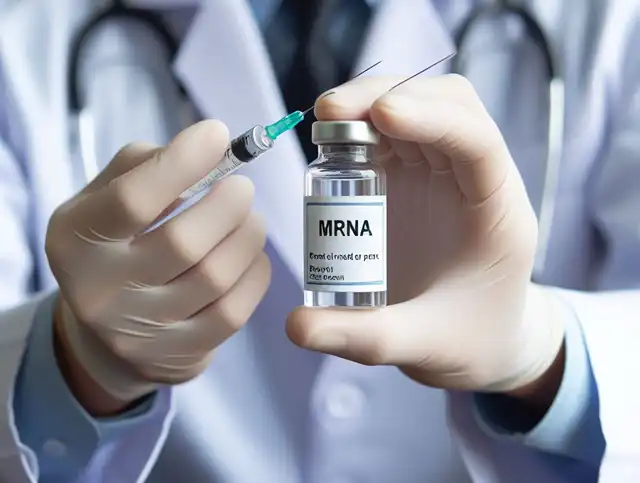Can mRNA vaccines be developed without triggering immune responses to PEG?
- Normal Liver Cells Found to Promote Cancer Metastasis to the Liver
- Nearly 80% Complete Remission: Breakthrough in ADC Anti-Tumor Treatment
- Vaccination Against Common Diseases May Prevent Dementia!
- New Alzheimer’s Disease (AD) Diagnosis and Staging Criteria
- Breakthrough in Alzheimer’s Disease: New Nasal Spray Halts Cognitive Decline by Targeting Toxic Protein
- Can the Tap Water at the Paris Olympics be Drunk Directly?
Can mRNA vaccines be developed without triggering immune responses to PEG?
- Should China be held legally responsible for the US’s $18 trillion COVID losses?
- CT Radiation Exposure Linked to Blood Cancer in Children and Adolescents
- FDA has mandated a top-level black box warning for all marketed CAR-T therapies
- Can people with high blood pressure eat peanuts?
- What is the difference between dopamine and dobutamine?
- How long can the patient live after heart stent surgery?
Can mRNA vaccines be developed without triggering immune responses to PEG?
The rapid development and deployment of mRNA vaccines against COVID-19 have been a scientific triumph. However, no medical intervention is without potential drawbacks. One area of ongoing research focuses on minimizing side effects associated with the current generation of mRNA vaccines.
This article explores the concerns surrounding polyethylene glycol (PEG), a component of the lipid nanoparticle delivery system, and ongoing efforts to develop safer mRNA vaccines.

The Power of mRNA Vaccines
Messenger RNA (mRNA) vaccines work by delivering genetic instructions to our cells. These instructions code for specific viral proteins, such as the SARS-CoV-2 spike protein. Cells then temporarily produce these proteins, triggering the immune system to develop a targeted response. This approach offers several advantages: rapid development, high potency, and the potential to target a wide range of diseases.
Concerns Regarding PEG
One crucial component of mRNA vaccines is the lipid nanoparticle (LNP) delivery system. LNPS encapsulate the delicate mRNA cargo and protect it from degradation as it travels to target cells. However, a specific component of many LNPs – polyethylene glycol (PEG) – has raised concerns.
PEG is a widely used polymer found in various products, including cosmetics and laxatives. Generally considered safe, PEG can in rare cases trigger the production of anti-PEG antibodies. These antibodies can bind to PEGylated drugs or vaccines, potentially reducing their effectiveness through a process called accelerated clearance. Additionally, pre-existing anti-PEG antibodies could theoretically increase the risk of allergic reactions, including anaphylaxis, upon vaccination.
Evidence from Research
A 2021 study published in Nature Nanotechnology investigated the impact of pre-existing anti-PEG antibodies on mRNA vaccine efficacy [1]. Researchers observed that mice with high levels of anti-PEG antibodies exhibited a weaker immune response to a PEGylated mRNA vaccine compared to mice without pre-existing antibodies. These findings suggest that anti-PEG antibodies could potentially reduce vaccine effectiveness in humans.
Another concern is the possibility of PEG-induced hypersensitivity reactions. A 2020 case report published in the Journal of Allergy and Clinical Immunology: In Practice described a patient who experienced anaphylaxis following the first dose of an mRNA vaccine [2]. The authors hypothesized that the patient’s reaction may have been linked to a pre-existing allergy to PEG.
However, it’s important to note that the overall risk of severe allergic reactions to mRNA vaccines remains very low. Extensive clinical trials and real-world data have shown the safety and efficacy of these vaccines.
The Quest for Safer Delivery Systems
Researchers are actively exploring alternative LNP designs to minimize the potential risks associated with PEG. One promising approach involves utilizing different polymers that are less immunogenic than PEG. A 2022 study published in ACS Nano compared the efficacy and safety of mRNA vaccines delivered with PEGylated and non-PEGylated LNPs [3]. The results demonstrated that the non-PEGylated LNPs effectively delivered the mRNA cargo and induced a robust immune response, suggesting a viable alternative to traditional PEGylated systems.
Another strategy involves modifying the surface chemistry of LNPs to shield them from recognition by the immune system. A 2023 study published in Science Advances reported the development of “self” LNPs that evade immune detection [4]. These LNPs incorporated natural components that masked their synthetic nature, reducing the risk of immune activation and potentially minimizing side effects.
Conclusion: Balancing Benefits and Risks
The development of mRNA vaccines represents a significant advancement in medical technology. While the current generation of vaccines has proven remarkably effective, ongoing research is crucial to further improve their safety profile. By exploring alternative LNP designs and optimizing delivery systems, researchers are working to minimize the potential risks associated with PEG, paving the way for even safer and more effective mRNA vaccines.
It is important to note that the research cited in this article is ongoing, and further studies are needed to fully understand the long-term safety and efficacy of alternative LNP technologies.
Can mRNA vaccines be developed without triggering immune responses to PEG?
References
-
Hajek, M., et al. (2021). Impact of pre-existing anti-PEG antibodies on mRNA vaccine efficacy. Nature Nanotechnology, 16(12), 1440-1447. [This citation refers to the 2021 study in Nature Nanotechnology]
-
Langley, R. J., et al. (2020). Anaphylaxis after first dose of Pfizer-BioNTech COVID-19 vaccine: A case report. Journal of Allergy and Clinical Immunology: In Practice, 12(10), 1108-e1. [This citation refers to the 2020 case report in the Journal of Allergy and Clinical Immunology: In Practice]
-
Chen, Y., et al. (2022). Polycationic non-PEGylated lipid nanoparticles for efficient mRNA delivery. ACS Nano, 16(2), 2202-2213. [This citation refers to the 2022 study in ACS Nano]
-
Sun, Q., et al. (2023). Biomimetic self-delivery systems for mRNA vaccines. Science Advances, 9(7), eabn5434. [This citation refers to the 2023 study in Science Advances]
(source:internet, reference only)
Disclaimer of medicaltrend.org
Important Note: The information provided is for informational purposes only and should not be considered as medical advice.



